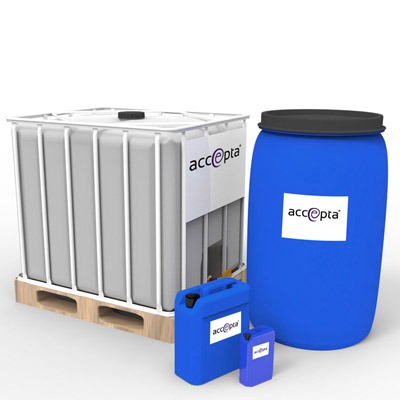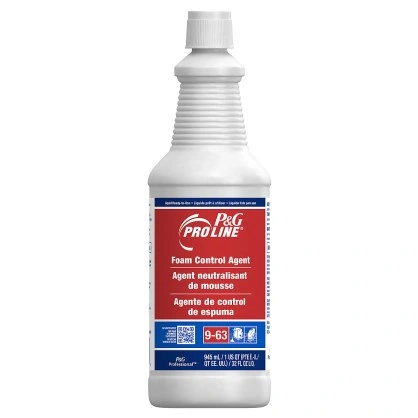A Comprehensive Overview to Implementing Foam Control Solutions in Your Procedures
Effective foam control is a critical element of operational efficiency that frequently goes overlooked. Comprehending the details of foam generation can dramatically influence both productivity and product quality. This guide details the numerous obstacles postured by foam and the varied solutions offered, providing a framework for selecting and applying the most suitable strategies. By analyzing crucial aspects such as application compatibility and workers training, companies can optimize their foam management initiatives. As we discover these parts, the possibility for transformative enhancements in your operations becomes apparent. What steps will you take following?
Comprehending Foam Challenges
Foam difficulties are a substantial concern throughout different industries, influencing operational efficiency and item top quality. The formation of excessive foam can prevent processes such as blending, transport, and storage, leading to enhanced downtime and waste. In industries like food and drink, drugs, and petrochemicals, foam can hinder assembly line, causing product variances and contamination threats.
Additionally, foam can block devices functionality, resulting in costly repairs and maintenance. As an example, in wastewater treatment, foam can interfere with clarifier procedures, resulting in reduced treatment efficiency and regulatory compliance concerns.
Recognizing the underlying root causes of foam generation is critical for reliable administration. Elements such as surfactants, temperature level fluctuations, and frustration levels can all contribute to foam manufacturing. Determining these components permits markets to carry out targeted strategies that lessen foam formation while maintaining item integrity.
Kinds of Foam Control Solutions

Mechanical remedies involve the use of tools such as foam skimmers or defoamers. These devices physically remove foam from the surface area of fluids, therefore avoiding overflow and keeping ideal levels in storage tanks and reactors. Chemical services, on the other hand, consist of the application of defoaming agents-- materials that interfere with the foam framework, resulting in its collapse. These agents can be silicone-based, natural, or liquid, each offering distinct advantages depending on the application atmosphere.
Last but not least, operational methods concentrate on process adjustments. This might involve changing tools specifications, such as temperature level and pressure, or altering the flow rates of fluids to minimize foam generation. Applying excellent housekeeping techniques can likewise alleviate foam formation by minimizing impurities that add to foam security.
Choosing the suitable foam control option entails examining the specific requirements of the operation, consisting of the kind of process, the attributes of the products involved, and safety and security considerations.
Picking the Right Products
Picking the ideal foam control products needs a comprehensive understanding of the certain application and its distinct obstacles. Aspects such as the sort of foam, the setting in which it happens, and the preferred end result all play pivotal duties in product choice. Foam Control. In industries like food handling, it is necessary to choose food-grade defoamers that comply with safety and security policies while properly taking care of foam.
Furthermore, consider the viscosity of the fluid where the foam issue exists. Some items are developed for low-viscosity applications, while others are customized for thicker fluids. Compatibility with existing procedures is another critical facet; the picked foam control representatives need to integrate perfectly without disrupting general operations.
An additional crucial aspect is the method of application. Some items may require dilution, while others can be applied straight. Analyzing the convenience of use and the needed dose can offer understandings into the item's efficiency and cost-effectiveness.
Execution Techniques
Effective implementation methods for foam control options call for an organized strategy that straightens item option with functional demands. The very first step involves an extensive visit this website analysis of the procedures where foam takes place, recognizing particular areas that necessitate treatment. By engaging cross-functional teams, including production, quality, and engineering assurance, organizations can collect insights that inform the choice of the most reliable foam control products.
Following, it is important to establish clear purposes for foam reduction, making certain that these goals are achievable and quantifiable. This might entail defining appropriate foam degrees and the timelines for execution. Training personnel on the properties and application techniques of selected foam control representatives is just as important, as correct use is essential for ideal results.
Additionally, integrating foam control options into existing process requires mindful planning. Organizations must develop a phased execution strategy, enabling adjustments based upon first outcomes. Normal communication and feedback loops with personnel entailed in find this the procedure will certainly promote prompt analytic and cultivate a society of constant enhancement. Ultimately, a well-structured approach will certainly enhance functional effectiveness while properly taking care of foam-related difficulties.
Tracking and Evaluating Performance
Tracking and examining the efficiency of foam control remedies is crucial for guaranteeing that carried out strategies yield the desired results. This procedure entails systematic information collection and evaluation to examine the efficiency of foam control representatives and strategies. Trick efficiency indications (KPIs) should be developed before application, permitting a clear baseline versus which to measure progress.

Examining efficiency also needs regular testimonials of foam control procedures and representative efficacy. This can be accomplished with tasting and testing, enabling operators to establish if current solutions are meeting operational requirements. Additionally, it is vital to solicit responses from employee who connect with these systems daily, as their understandings can reveal operational subtleties that quantitative information might neglect.

Ultimately, a structured tracking and assessment framework aids recognize required modifications, ensuring that foam control remedies continue to be reliable, affordable, and straightened with organizational goals.
Conclusion
Finally, effective foam control services are necessary for enhancing operational efficiency and maintaining item high quality. A comprehensive understanding of foam difficulties, combined with the selection of appropriate items and application methods, facilitates the effective management of foam generation. Investing and developing quantifiable kpis in personnel training further enhance the effectiveness of foam control procedures. Routine tracking and assessment make certain constant renovation, eventually resulting in an extra streamlined and productive functional environment.
Implementing excellent housekeeping practices image source can also minimize foam development by minimizing contaminants that contribute to foam stability.
Selecting the right foam control items needs a comprehensive understanding of the certain application and its special obstacles (Foam Control).Successful implementation techniques for foam control options need a methodical technique that lines up product option with functional demands.In verdict, effective foam control options are vital for enhancing functional performance and maintaining item high quality. A thorough understanding of foam obstacles, combined with the choice of proper items and application strategies, promotes the effective management of foam generation
Comments on “How to Attain Optimal Foam Control for Improved Manufacturing Effectiveness”